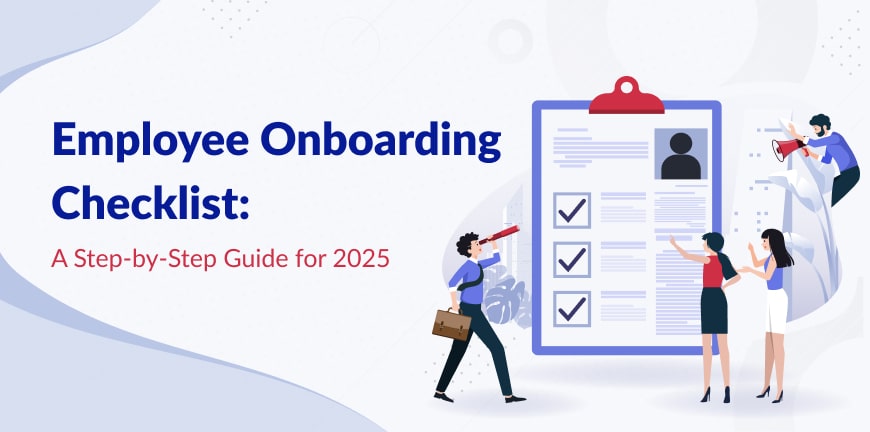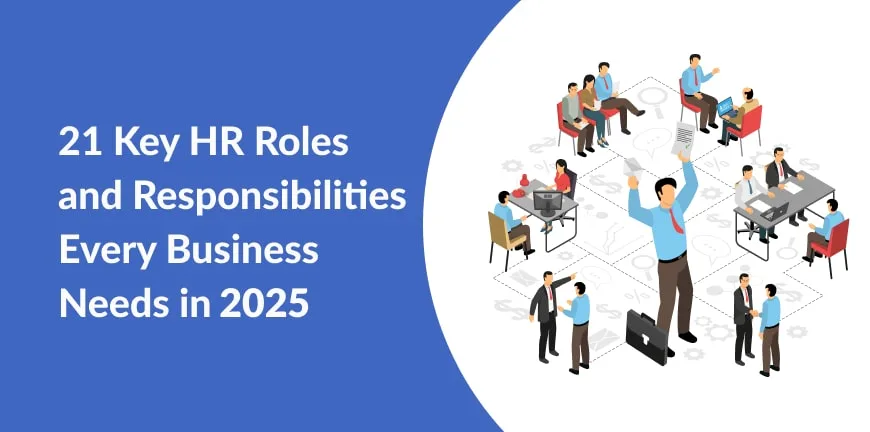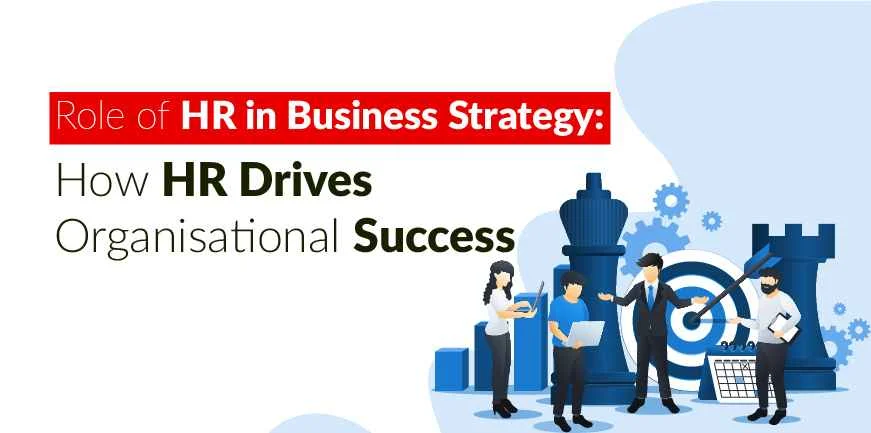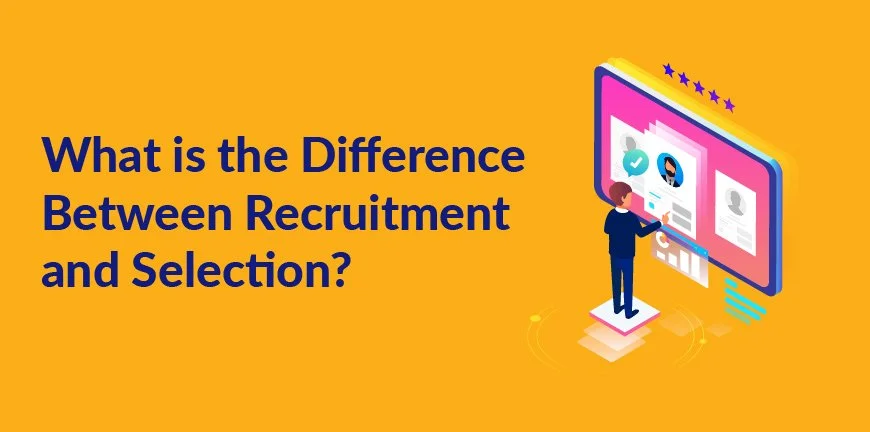
Why Global Tech Giants Are Betting Big on Indian Data Centers?
14/04/2025
Attracting and Retaining Gen Z Talent in the Manufacturing Sector
17/04/2025An HR knows that its extremely essential to ensure that new employees form good first impressions about their new workplace. And forming opinions about their new place of work happens right from the time the employee steps in. An HR owes the responsibility of making sure that the new employee feels included, safe and happy before starting their new job, and an effective employee onboarding program is the way to go.
However, to craft the right onboarding program, there must be an employee onboarding checklist in place, that can lead them to it. Carrying out an effective employee onboarding process is important for all organizations alike and the stats agree.
- A bad employee onboarding process results in a bad hire. Organizations with a good onboarding process improve new-hire retention by 82%
- Organizations with a solid onboarding process experience 50% less turnover in the first year.
- Only 12% of employees feel that their organization has a good onboarding process.
In today’s fast-evolving workplace, a well-structured onboarding process is essential to ensure new hires feel confident, connected, and aligned with your company’s goals from day one. This step-by-step guide to employee onboarding in 2025 is designed to help HR teams, managers, and business leaders create a smooth, modern, and meaningful onboarding experience.
What is Employee Onboarding?
Employee Onboarding refers to the process of integrating a new employee into the organization by helping them understand their role, company culture, introducing them to their team members and other department heads if required, providing them with the necessary resources they require to perform in their roles and be productive. An effective employee onboarding ensures that new employees acclimate to their new workplace and become a valuable member of the team and organization.
What is the Importance of Employee Onboarding Process?
The purpose of onboarding is to allow employees transition into their new roles and build confidence to perform their tasks during the first few weeks or months of employment. Employee retention, productivity and engagement are some of the main reasons why employee onboarding is important.
- A good onboarding experience helps an employee build new skills and achieve a greater degree of independence and control over their actions. Employees learn to build collaborative relationships with other team members. All of this leads to higher job satisfaction.
- A positive onboarding experience not only enhances the employee experience but also benefits organizations in many ways like
- Decreased turnover
- Enhanced productivity
- Increased revenue
- Enhanced brand reputation
Onboarding is not just a mandate but should be treated as a priority and must be customized as per your organization’s needs.
List of New Employee Onboarding Checklist
Its 2025, and revisiting and revamping your onboarding process to suit the needs and preferences of new employees is necessary. And for this, HR must have a suitable onboarding checklist. To curate an ideal employee onboarding checklist, it is important to first understand what goes into onboarding. Your employee onboarding plan must include-
- A 30/60/90 days onboarding period
- Email check ins
- Track goals in real time
Essentially, there are 5 main phases of employee onboarding.
1. Pre-boarding
The preboarding period starts before the employee’s first day on the job. It starts when the candidate signs the job offer. There are a few things you must do before the employees start their first day to make them feel at ease and help them have a good first day. This could include setting up their email account, putting them in touch with their direct supervisor and more.
Welcome package
- Send new employees an email that includes a welcome package with all the essential paperwork that must be completed before they join the team.
- Provide them with a detailed itinerary or things to do on their first day and week, like details about their job responsibilities and more.
Set up their personal accounts and get the paperwork completed
- Procure the devices and equipment like laptops, monitors, mobile devices, and other accessories for the new hire to make sure they have everything they need, to complete their duties effectively. Ensure that everything is secured in advance
- Set up their online accounts, e-mail, corporate mail etc, before they start off on their first day. Send them the login details. If necessary, work with all the relevant team members to create these accounts in advance.
- Have the employee complete the W-4 form as well as state and local withholding forms.
- Ask the new employee to fill out their direct deposit authorization form. However, this will not be necessary if they receive physical pay checks.
- Make sure all the paperwork is ready before the new employee walks into their new workplace.
Set up their physical workstation and keep the basics they need ready before they start
- Inform the team about the new colleague and brief them about what the new hire will be handling, their roles and responsibilities.
- Stay connected with the new hire after signing their contract and check in on them and encourage them to ask questions if they have any.
- Have their workstation cleaned up before they start.
- Before they start their first day make sure have their ID’s and access card ready for them to use right from day 1.
2. First Day Onboarding Checklist
Welcome the candidate by providing them with their access card and their ID cards. Make sure they know where to go and who to meet and who will guide them
Help candidates familiarize with the workplace and the team
- Make sure that the new employee is comfortable. Let the manager and new hire sit down for a while and go through the brief of how the day is supposed to pan out for the new hire.
- Give the new hire a tour of the workplace. Show them how the coffee machines work, where the toilets are and the different departments that sit.
- This is one of the most important steps during the employee onboarding process. You must make sure that the new hires are formally introduced to their teammates.
Offer support and give them a brief about the company
- Provide the new hire with an office buddy who can help them familiarize themselves with the company culture, benefits, processes and more.
- Make them watch a company presentation that includes the core founders or senior leaders of the organization speaking about how the company came to be, its mission, goals etc.
- Introduce the candidates to a weekly and monthly structure they can expect in their new role
Get the practicalities out of the way
- Ensure that you have the scan of the new hire’s ID, or passport etc depending on your company’s rules and regulations
- Take a picture of the new hire that can be printed onto their access card or other communication apps.
Provide them with the required training
- Train them on the different software that your company is currently using like Zoom, Google Docs, etc.
- Help them with basic email training, how to set their professional signatures etc.
HR Orientation
After you have held the initial meetings, set up an orientation session with human resources where they can review and digitally sign the HR documents that include HR policies, employee requirements, details regarding PTO, company account setup details and more.
3. First week (Onboarding and Orientation)
This is the stage that starts after the new hire begins work at your organization. This is where the employee must be bought up to speed with organizational policies, job roles and responsibilities.
Have the team talk and get familiar with the new hire
- Let the new hire sit with the teammates and speak with them to understand the work culture and how to effectively collaborate with them
- Do have a one-on-one meeting with the hiring manager as well to go over the week’s tasks and evaluate what worked and what did not.
Some of the must do’s
- Schedule monthly meeting to evaluate how the new hire is doing. These monthly meeting must be held every month until the new hire completes three months.
- If you have a page in your company website where you add the profiles of new employees now is the time. But do make sure that you have consent from the new hire.
4. The first 90 days
The first 90 days is a tricky period for both the new employees and the employer. It is a crucial time where the employee is settling in and getting familiar with the organization and the employer is allowing the time and supporting the employee to settle in.
30-day goals
- The first month is about the employee learning how to do the job. If there are external goals, they should be small and achievable.
- The team manager and HR can work together to set a goal for the new hire to achieve in the first 30 days and later evaluate how they have performed.
60-day goals
- The second month should help the employee step into more role-specific activities.
- the employee must have a more solid understanding of the fundamentals of the organization and its pain points.
- They should also become a contributing member of the team.
90-day goals
- At the end of 90 days an employee will be effectively onboarded and integrated into the team and culture, adding value to the business.
- you should closely align the 90-day goals to the longer-term performance expectations of the role. But the success of the same depends on how well the employee achieves 30-day and 60-day goals.
Employee training
During the first 90 days provide the new hire with all types of training necessary including
- Instructor-led learning
- E-learning
- On-the-job training
- Job shadowing
- Mentoring
5. After the completion of one year
The one-year completion of an employee could end with an annual performance review. Some of the things you can cover are-
- Ask the employees how their experience during the year was working with the organization, their teammates etc.
- How the employees performed
- Discuss your company’s L&D program, ask them about their preferences and career ambitions
- Collect feedback from the new employees by sending an anonymous feedback form to all employees and encouraging them to provide honest feedback about their experience. This can help boost employee retention.
A strong onboarding process sets the tone for an employee’s entire journey within your organization. By following a structured and thoughtful onboarding checklist, you ensure that new hires feel welcomed, supported, and equipped to thrive from day one. As we move through 2025, companies that prioritize a seamless, tech-enabled, and personalized onboarding experience will not only boost employee engagement and retention but also gain a competitive edge in attracting top talent. Use this guide as your roadmap to build an onboarding program that aligns with modern workplace expectations—efficient, inclusive, and impactful.
Frequently Asked Questions (FAQs)
1. What is an employee onboarding checklist?
An employee onboarding checklist is a guide that defines the tasks needed to help an employee integrate into their role and the workplace. With an HR onboarding process checklist in place, it is easier for them to help new hires settle down quickly and become productive sooner.
2. Why is an onboarding checklist important?
An onboarding checklist is important as it helps organizations prepare and motivate their new hires to settle into their roles quickly, collaborate with co-workers and work toward organizational goals. An effective onboarding process leads to higher employee engagement, satisfaction, and retention.
3. What are the 5Cs of employee onboarding?
The 5Cs of employee onboarding are Clarity, Compliance, Culture, Connection, and Checkback. This helps new employees settle into their new role, while being fully aware of the company policies and integrate themselves into the company culture.
4. What are the common onboarding mistakes to avoid?
Some of the common onboarding mistakes to avoid are – not engaging the new hires, overloading information, not defining role expectations, failing to act upon feedback and neglect of company culture.
5. How can onboarding checklists improve employee retention?
An onboarding checklist can help improve employee retention as it helps form a structured onboarding process that in turn can create a first good impression. It provides clarity and reduces confusion, fosters a sense of belonging, reduces turnover, and accelerates time to productivity.
6. What is the difference between onboarding and orientation?
Onboarding describes a series of events that enable new employees to learn what they need to do to meet the responsibilities of their new positions. Orientation, on the other hand, refers to the initial welcome a company provides to the new hire.
Contact Us For Business Enquiry

Rajkumar Shanmugam
Rajkumar Shanmugam is the Head of HR at ALP Consulting, bringing over 19 years of comprehensive HR leadership experience across India and international markets. His expertise spans talent acquisition, employee relations, performance management, compliance, and HR transformation. Rajkumar has a proven track record of driving people-centric initiatives, enhancing workplace culture, and aligning HR strategy with business goals. With extensive experience in US staffing operations and global mobility, he continues to lead organizational excellence through innovation and employee engagement.




